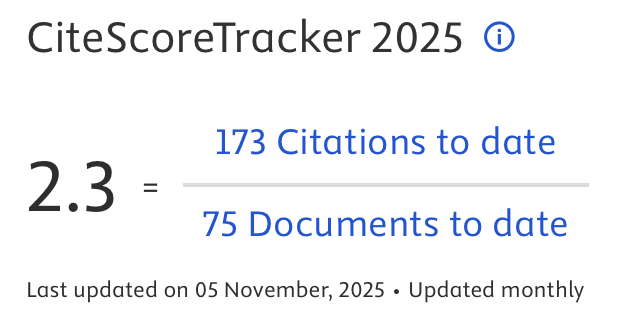METODE TAFSIR MAUDU’I (Perspektif Komparatif)
DOI:
https://doi.org/10.14421/qh.2017.1802-02Abstract
Metode maud}u>’i> adalah metode yang banyak digunakan oleh para penafsir akhir-akhir ini. Metode ini dianggap lebih mampu menjawab permasalahan-permasalahan dan menyuguhkan maksud al Qur’an secara tuntas apalagi dengan perkembangan berbagai permasalahan yang dihadapi umat muslim dan harus dicarikan prinsip-prinsip penyelesaiannya dalam al Qur’an. Salah satu ulama yang menawarkan konsep tafsir maud}u>’i> adalah Muh}ammad Ba>qir al S}adr. Beliau menulis buku yang berjudul al Madrasah al Qur’a>niyyah. Menurut Ba>qir al S}adr, seorang penafsir yang menggunakan metode maud}u>’i> harus memusatkan perhatian terhadap suatu masalah dalam kehidupan sosial untuk dicarikan solusinya dalam al Qur’an. Ulama lain yang menawarkan metode tafsir maud}u>’i> adalah Abdul H}ayy al Farmawi> yang menjabat sebagai guru besar pada Fakultas Ushuluddin Universitas al Azhar. Beliau menerbitkan buku berjudul alBida>yah fi al Tafsi>r al Maud}u>’i> dengan mengemukakan langkah-langkah secara terperinci untuk menerapkan metode maud}u>’i>. Penulis tertarik untuk membandingkan metode tafsir maud}u>’i> yang ditawarkan kedua tokoh tersebut karena adanya perbedaan yang signifikan antara metode yang kedua tokoh ini tawarkan. Penelitian ini mencoba membandingkan metode kedua tokoh tersebut dengan melihat persamaan, perbedaan, kelibihan, kekurangan, dan sintesis dari kedua metode tersebut.Kata Kunci: Tafsir Maud{u<’i<, Muhammad Baqir al Sadr, Abdul Hayy al Farmawi
 Abstract viewed: 3104 times
|
Abstract viewed: 3104 times
|
 PDF downloaded = 1773 times
PDF downloaded = 1773 times
References
Al Farmawi>, ‘Abd al-H|ayy. al-Bida>yah fi> al-Tafsi>r al-Maud{u>’i>: Dira>sah Manhajiyyah Maud}u>’iyyah. al-T{aba’ah al-S|aniyyah. 1977.
. Metode Tafsir Maud}u>’i> terj. Suryan A. Jamrah. Jakarta: PT RajaGrafindo Persada. 1994.
Kaltsum, Lilik Ummi. Metode Tafsir Tematis M. Baqir al-Shadr. Surabaya:Putra Media Nusantara. 2010.
Mallat, Chibli. The Renewal of Islamic Law: Muhammas Baqer as-Sadr Najaf and the Shi’i Internasional. Madrid: Cambridge University Press. 1993.
Muslim, Mus}t}a>fa>. Maba>his| fi> al-Tafsi>r al-Maud{u>’i>. Damaskus: Da>r al-Qalam 1989.
Al-S}adr, Muhammad Ba>qir. al-Madrasah al-Qur’a>niyyah. Qum: Markaz al-Abh}as wa al-Dira>sa>t al-Takhas}s}us}iyyah li al-Syahid al-S}adr. 1979.
. Sejarah dalam Perspektif Al Qur’an terj. M. S. Nasrullah. Jakarta: Pustaka Hidayah. 1990.
. al-Tafsi>r al-Maud}u>‘i> li al-Qur’a>n al-Kari>>m. Baghdad: Majma’ al-S|aqalain al-‘Ilmi>. 2007.
Lailia Muyasaroh
Jurnal Studi Ilmu-Ilmu al-Qur’an dan Hadis
Al-Sayyid, Kamal. Taja>rub al-‘Ulama>’ fi> ‘Us}u>r al-G{aibah, II. Qum: Muassasah Ans}ariya>n. 2006.
Shihab, M. Quraish. Membumikan Al Qur’an. Bandung: Mizan. 2009.
Downloads
Published
How to Cite
Issue
Section
License
Publishing your paper with Jurnal Studi Ilmu-ilmu al-Qur'an dan Hadis means that the author or authors retain the copyright in the paper. Jurnal Studi Ilmu-ilmu al-Qur'an dan Hadis uses license CC-BY-NC-ND or an equivalent license as the optimal license for the publication, distribution, use, and reuse of scholarly works. This license permits anyone to copy and redistribute the material in any medium or format and must give appropriate credit, provide a link to the license, and indicate if changes were made. If you remix, translate, transform or build upon the material you may use it for private use only and not for distribution. Jurnal Studi Ilmu-ilmu al-Qur'an dan Hadis granted an exclusive non-commercial reuse license by the author(s), but the author(s) are able to put the paper onto a website, distribute it to colleagues, give it to students, use it in your thesis, etc, so long as the use is not directed at a commercial advantage or toward private monetary gain. The author(s) can reuse the figures and tables and other information contained in their paper published by Jurnal Studi Ilmu-ilmu al-Qur'an dan Hadis in future papers or work without having to ask anyone for permission, provided that the figures, tables, or other information that is included in the new paper or work properly references the published paper as the source of the figures, tables or other information, and the new paper or work is not direct at a private monetary gain or commercial advantage.
Jurnal Studi Ilmu-ilmu al-Qur'an dan Hadis journal Open Acces articles are distrubuted under the Creative Commons Attribution-NonCommercial-NoDerivatives 4.0 International (CC BY-NC-ND 4.0). Article can be read, copy and redistribute the material ini any medium or format under the following conditions:
Attribution — You must give appropriate credit, provide a link to the license, and indicate if changes were made. You may do so in any reasonable manner, but not in any way that suggests the licensor endorses you or your use.
NonCommercial — You may not use the material for commercial purposes.
NoDerivatives — If you remix, transform, or build upon the material, you may not distribute the modified material.









